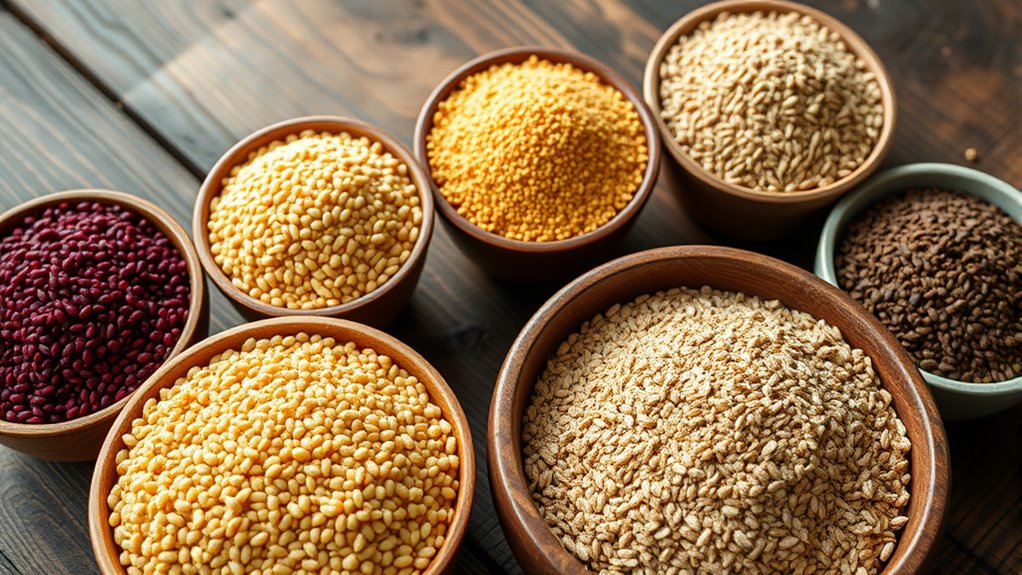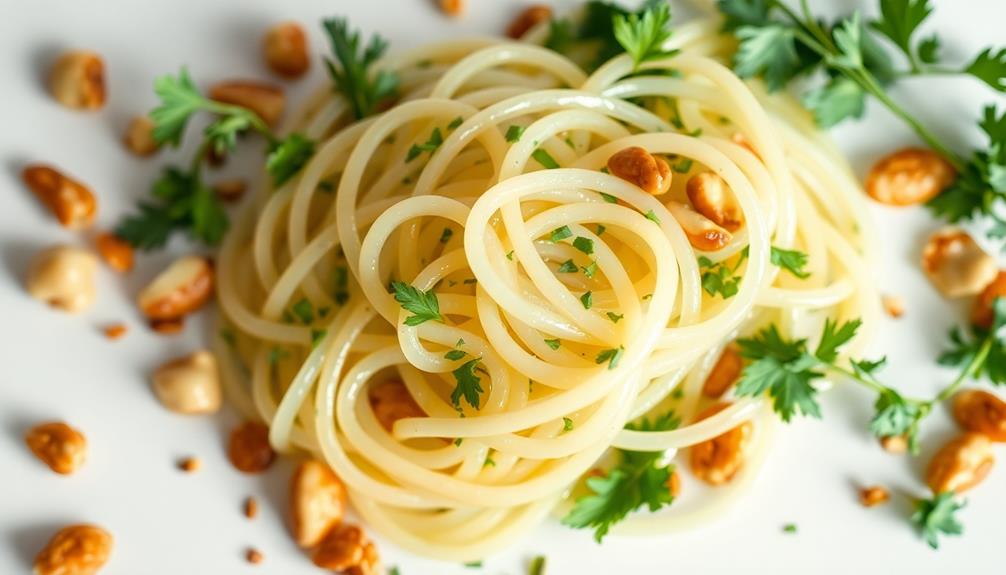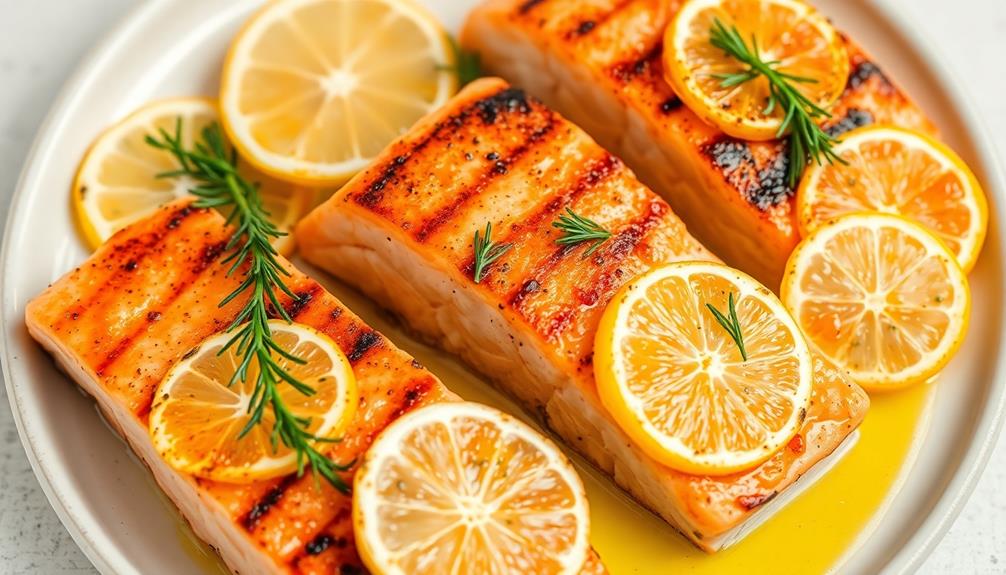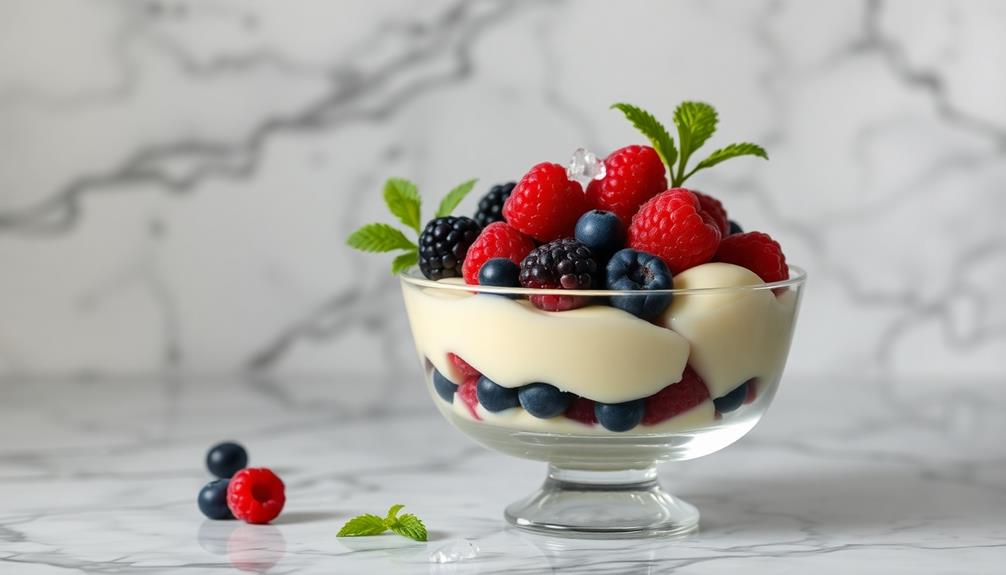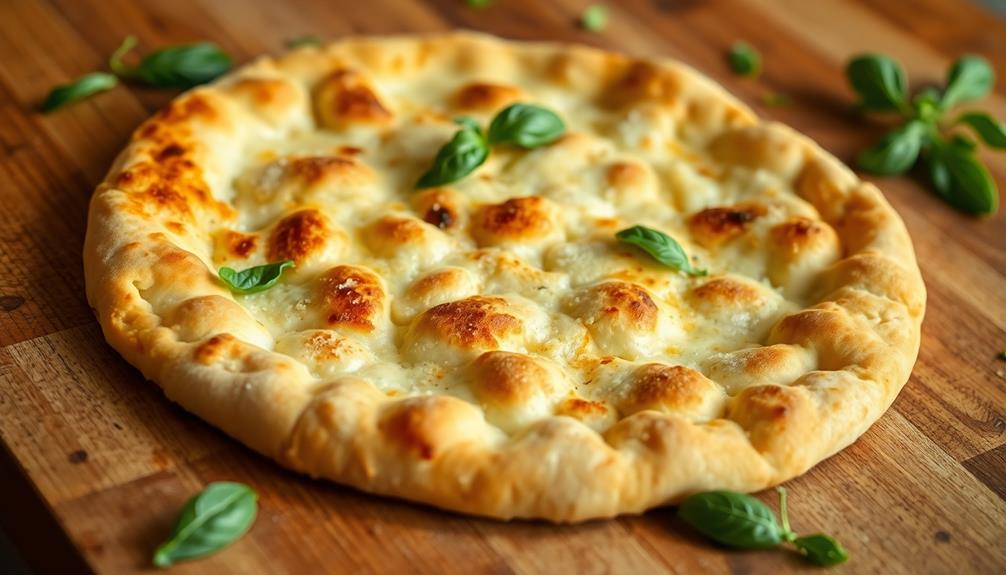Discover the potential of ancient grains like quinoa, amaranth, millet, and sorghum to elevate your gluten-free baking. These nutrient-rich options not only add unique flavors and textures but also provide essential nutrients such as protein, fiber, and minerals. Their natural gluten-free qualities make them perfect for creating healthier, satisfying baked goods. Keep exploring to learn how these grains can truly transform your gluten-free dishes and inspire your culinary creativity.
Key Takeaways
- Ancient grains like quinoa, amaranth, millet, and sorghum are naturally gluten-free, making them ideal for wheat-free baking.
- These grains boost nutritional content with essential amino acids, fiber, minerals, and antioxidants in baked goods.
- Their unique flavors and textures enhance the taste and structure of gluten-free breads, muffins, and pancakes.
- Blending these grains with other gluten-free flours improves crumb, rise, and overall baking performance.
- Incorporating ancient grains diversifies diets and creates delicious, healthful wheat-free baked products.
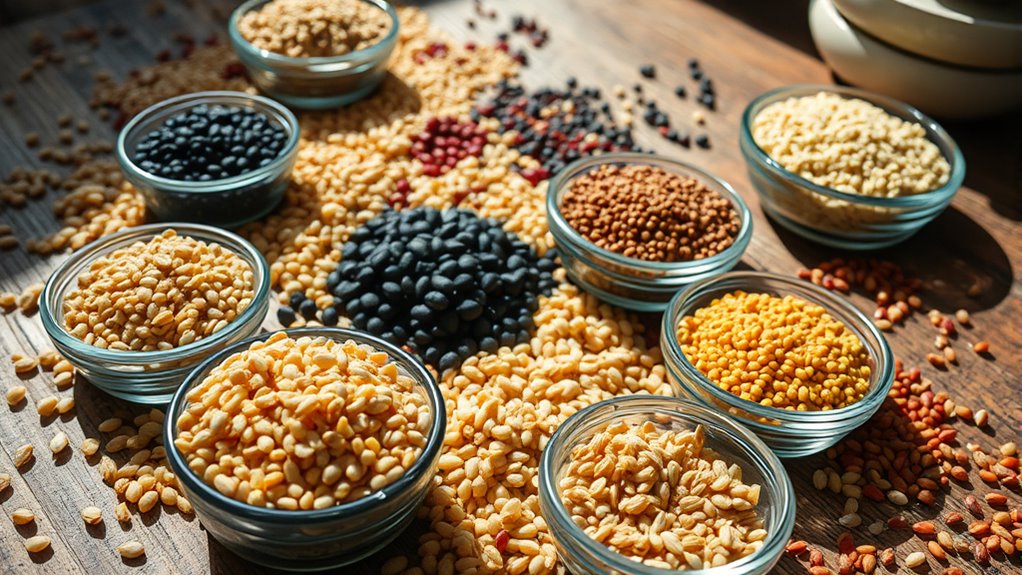
Have you ever wondered what grains you can enjoy if you’re avoiding wheat? The good news is that many ancient grains serve as excellent gluten free substitutes, offering both variety and nutritional benefits. These grains, used for centuries across different cultures, are now gaining popularity for their unique flavors and healthful properties. When exploring gluten free substitutes, it’s essential to understand each grain’s nutritional profile, as this helps you choose the best options to meet your dietary needs. Unlike wheat, which contains gluten, these grains are naturally free of it, making them perfect for those with gluten sensitivities or celiac disease.
Quinoa is one of the most versatile and popular gluten free grains. It’s technically a seed, but it’s often grouped with grains due to its similar culinary uses. Quinoa boasts a complete protein profile, meaning it provides all nine essential amino acids, which is rare among plant-based foods. Its high fiber content supports digestion, and it’s rich in magnesium, iron, and B vitamins. This nutrient-dense profile helps you create nourishing, satisfying baked goods, salads, or side dishes. When baking, you can substitute quinoa flour or blend it with other gluten free flours to improve texture and flavor.
Amaranth is another ancient grain that fits perfectly into a gluten free diet. Like quinoa, it’s high in protein and fiber, making it a filling choice for baked goods. Amaranth is especially rich in calcium, magnesium, and antioxidants, which support bone health and immune function. Its slightly nutty flavor adds depth to bread, muffins, or pancakes. Because amaranth is dense and sticky, mixing it with lighter flours can improve the final texture of your baked creations.
Millet is a mild-tasting grain that’s been cultivated for thousands of years. It’s an excellent source of magnesium, phosphorus, and B vitamins. Its light, fluffy texture makes it suitable as a rice substitute or as a flour in gluten free baking. Millet flour can be combined with other gluten free flours like tapioca or sorghum to achieve a better rise and crumb in bread recipes.
Sorghum is gaining popularity due to its impressive nutritional profile. It’s high in antioxidants, fiber, and minerals such as iron and magnesium. Sorghum flour lends a slightly sweet, earthy flavor to baked goods and offers a good structure when used in gluten free recipes. Its versatility allows you to experiment with various baked goods, from muffins to bread.
Incorporating these ancient grains into your baking not only diversifies your diet but also boosts your nutritional intake. Understanding their grain nutritional profiles helps you craft delicious, healthy, and satisfying gluten free baked goods that stand out in flavor and texture.
Frequently Asked Questions
Can These Grains Replace Wheat in All Recipes?
You might wonder if these grains can replace wheat in all recipes. While grain substitution offers exciting options, complete replacement often requires recipe adaptation because these ancient grains have different textures and gluten content. You’ll need to experiment with ratios and additional ingredients to achieve desired results. Keep in mind, some recipes may not convert perfectly, so be patient and willing to tweak your approach for the best outcome.
Are Wheat-Free Grains Safe for People With Nut Allergies?
You might worry about nut allergy cross reactivity when trying new grains, but many wheat-free grains are safe alternatives. While some seeds and grains like millet or quinoa rarely trigger nut allergies, it is crucial to check labels and consult your doctor. Don’t let fear hold you back—explore safe grain options designed as nut allergy-friendly. You can enjoy nutritious, gluten-free baking without risking allergic reactions.
How Do Storage Needs Differ for Ancient Grains?
When storing ancient grains, you need to contemplate their shelf life and storage temperature. Unlike processed grains, these often last longer if kept in a cool, dry place, ideally around 60°F. Proper storage helps prevent spoilage and maintains freshness. Some grains, like quinoa or amaranth, may last even longer if stored in airtight containers in the fridge or freezer, extending their grain shelf life and ensuring quality for your gluten-free baking.
Do These Grains Contain Any Naturally Occurring Toxins?
You might wonder if these ancient grains have any naturally occurring toxins. Generally, they contain minimal grain toxin concerns, but some grains like millet can have trace amounts of naturally occurring compounds that might cause issues if consumed excessively. To stay safe, soak or cook these grains properly, and buy from reputable sources. Proper preparation minimizes any potential toxin risks, letting you enjoy their nutritional benefits confidently.
Are There Any Flavor Differences Compared to Wheat-Based Baked Goods?
You might think gluten-free baked goods lack flavor, but surprise! These ancient grains offer delightful flavor nuances and texture variations that keep your taste buds on their toes. While they may differ from wheat-based treats, the unique profiles add depth and complexity. So, instead of missing out, you’ll enjoy a whole new world of taste, proving that gluten-free baking can be just as satisfying—and often more interesting.
Conclusion
Now that you know about these ancient grains, you’re ready to elevate your gluten-free baking game. Each one offers unique flavors and textures that can turn ordinary recipes into wheat-free wonders. Remember, variety is the spice of life, so don’t hesitate to experiment and find what works best for you. As the saying goes, “Practice makes perfect,” so keep trying, and soon you’ll be baking with confidence and delicious results.
